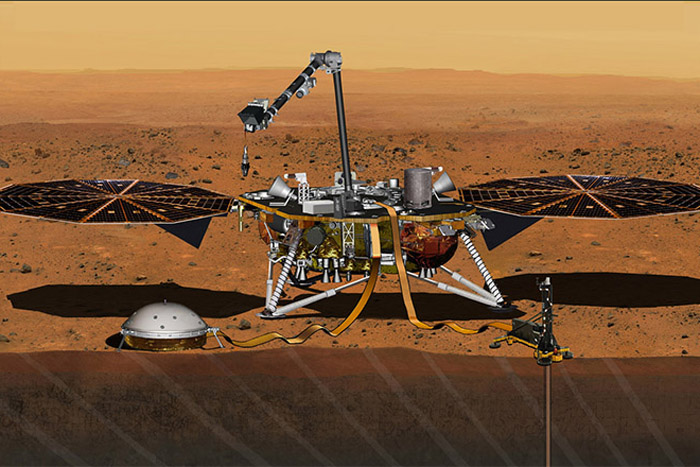Will NASA's InSight Mars Mission Launch in 2018?

NASA had hoped its next Mars probe would have launched by now. Instead, the agency is mulling whether to spend an extra $150 million to fix a problem with the spacecraft and re-target liftoff for May 2018, the next time Earth and Mars favorably align for flight.
"The fact that I'm standing here talking to you, instead of gloating on the phone (from the Mission Control Center) is a clue that things haven't gone as well as one may have hoped," project scientist Bruce Banerdt told a Mars exploration planning group last week.
NEWS: NASA's Next Mars Mission Has Been Grounded
Launch of InSight, which is designed to study the deep interior of Mars, had been targeted for Friday, March 4. But preparations came to a sudden halt in late December after a nagging technical problem with the spacecraft resurfaced for a fourth time. By then, it was too late to finish another round of repairs before the 2016 launch window closed.
"Everything was ready to go, but then we kind of went off the rails," Banerdt said.
Last week, the InSight team presented NASA managers with a proposal to fix the spacecraft and an estimate of the cost.
The extra $150 million would bust the project's current cost cap of $675 million and likely delay other projects. NASA already had spent about $525 million on InSight when work was suspended.
Breaking space news, the latest updates on rocket launches, skywatching events and more!
"Overall, I think we got a positive response," Banerdt said.
ANALYSIS: The Dust Devils of Mars Could Pack a Seismic Punch
A decision on whether NASA will proceed with the mission is expected as early as this week, he added.
The problem with InSight involves a nine-inch diameter spherical chamber that holds sensors needed to make seismic measurements. The chamber has to be able to maintain a near-perfect vacuum so the instruments can detect motions equivalent to the width of a hydrogen atom.
With that data, scientists hope to learn about Mars' core and mantle, information that is key to understanding how the planet formed and evolved.
The chamber has an infinitesimal leak — so tiny, says Banerdt, that if a car tire leaked at that rate it wouldn’t need any air added for three centuries. But the leak is too high for the seismometer to operate properly.
"We figured out what the problem was and it's not going to happen again," Banerdt said.
ANALYSIS: Mars Mission Will Drill Deep for Inside Information
Although a subcontractor in France manufactured the faulty instrument, Banerdt says there should have been a management system in place to catch the error.
"I don't place the blame on any particular agency or any particular organization. It really was kind of a systemic problem … We share in the responsibility and we're going to be sharing in the cost to fix it," he said.
The French space agency CNES would foot the bill for its extra labor costs, Banerdt added.
If approved, the revamped InSight spacecraft would launch on May 5, 2018, and land itself on Mars on Nov. 26, 2018, for a two-year mission.
Originally published on Discovery News.
Join our Space Forums to keep talking space on the latest missions, night sky and more! And if you have a news tip, correction or comment, let us know at: community@space.com.

Irene Klotz is a founding member and long-time contributor to Space.com. She concurrently spent 25 years as a wire service reporter and freelance writer, specializing in space exploration, planetary science, astronomy and the search for life beyond Earth. A graduate of Northwestern University, Irene currently serves as Space Editor for Aviation Week & Space Technology.
